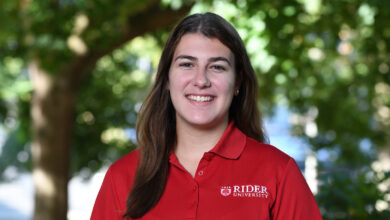University professor recalls 2015 prioritization in wake of Credo
By Joel Feldman
In a recent email to faculty, the provost said that the prioritization process used in 2015 will be the basis for the decisions of the newly formed efficiency task force, claiming that this process was endorsed unanimously by the 11 faculty members on the 2015 prioritization task force. I served on that task force and would like to set the record straight.
I know that the task force did not vote unanimously in favor of the recommendations, because I voted no on many of the specific recommendations, and I did not vote in favor of the final report. I also know that many of the other faculty who served on that task force expressed misgivings about both the process and the result. Moreover, it cannot be true that the process used by the task force was endorsed by the members of that task force, because we were not given the opportunity to vote on the process, which was handed down by the provost, who gave us no choice but to use the method of placing the programs into quintiles.
This is not the first time the provost has misled us. When the prioritization process began in 2015, we were assured that decisions to eliminate programs and lay off faculty would be based on the results of the process, but just weeks later, on Oct. 29, 2015, it was announced that more than a dozen programs would be eliminated, and more than a dozen faculty members would be laid off. The layoff plan provides a clear indication of the intentions of the administration with regard to the elimination of programs: the goal is to eliminate small programs, mostly in the liberal arts and social sciences, which the administration deems not sufficiently profitable.
The flaws of the process used in 2015 are too numerous to enumerate here, but it quickly became clear to me that the process was rigged to generate the predetermined outcome that can be easily discerned in their layoff plan. The use of quintiles means that it is predetermined that 40% of programs will be considered for elimination or reduction of resources because they will be placed in the bottom two quintiles. This is equivalent to being required to give a D or F to 40% of the students in a course. Moreover, although the process considered qualitative factors as well as financial data in evaluating programs, the qualitative factors tended to cancel out of the equation, because most of our programs are already excellent, so there was not a great deal of difference in the quality. Consequently, the financial data became almost the sole basis for evaluation, and the result was predictable: small programs with few majors tended to end up in the lower quintiles.
I participated in the process in 2015 in good faith, hoping to promote improvement and excellence in all of our programs. When I suggested that some of the programs in the lower quintiles could be improved by providing more resources, one member of the task force who is no longer at Rider informed me that “not all of our programs can be excellent.” This was the moment when I realized that the process was not about the improvement of our programs, but about eliminating programs that are not considered profitable.
The philosophy program, for instance, despite its many qualitative strengths, was placed in the next to last quintile and “curricular efficiencies” were recommended. The result is that the two faculty members who retired were not replaced, and the program now has only two full-time faculty members. remaining. The program is now barely able to maintain viability, and I doubt it will survive another round of prioritization. Although philosophy programs tend to be small and do not generate a lot of profit, they are central to the mission of any university. That illustrates the fundamental flaw in the prioritization process: by subordinating all other values to the unrestrained pursuit of profit, it threatens to rob the institution of its vitality and undermine its mission.
Joel Feldman, associate professor,
Department of History and Philosophy



